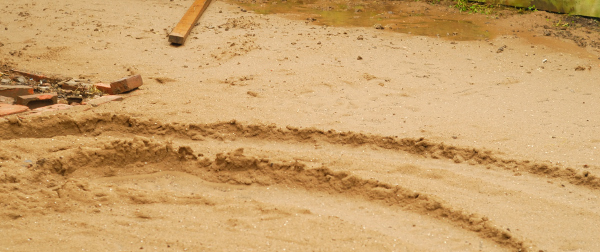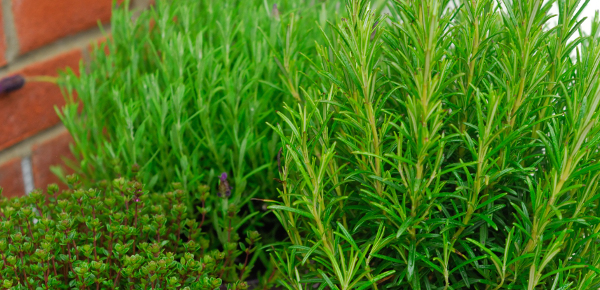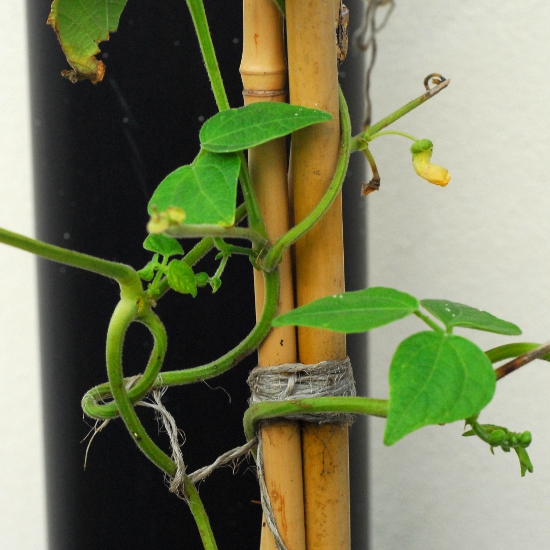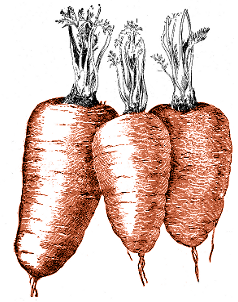Posts tagged ‘thyme’
Posted in The New Garden, Planning, Practicalities on Sunday, May 9th 2021 (10.48 AM).
In the last post I mentioned that the new garden is a barren empty space, which was and is true. The previous owners had bought a patch of soggy, waterlogged and undraining grass, and had stripped it and all the topsoil off intending to Do Something With It, but never really did get anything done. Arriving with maybe a little more self-awareness, we realised we were going to have to bring in landscapers, at the very least, to help us come up with an outline layout and do much of the heavier work—the earthmoving, paving-laying, bed-building and so on. So now, a start has been made, and to hopefully make it a little less waterlogged the garden currently resembles the sort of artificial inland beach you find in The Netherlands.

Topsoil is already on order, so hopefully before too long we will have a bare expanse of soil instead of sand. In the meantime, we’ve started buying plants to go into the beds when they are ready. Fingers crossed they won’t have to sit in their pots too long.

Unsurprisingly, herbs are the first thigng to be bought.
thyme, rosemary, lavender, Lavandula, Salvia rosmarinus, Rosmarinus officinalis, Thymus
Posted in Decorative, Experimentation, Garden Diary, Practicalities, The Old Garden In Bristol on Sunday, April 17th 2016 (9.18 PM).
This afternoon, I finished weeding the rosebay willowherb, until more shoots spring up at least. Weeded every shoot I could see, dug up every rhizome I could find, levelled out the soil and spread a layer of compost across the top.
The sowing plan for the bed starts with: peas at the back, against the trellis. Now, I’ve had issues with pea support in the past, and I suspected that the laths of the trellis are a bit big for a pea plant to wrap a tendril around, so the trellis has been covered in green plastic pea netting. It’s not the prettiest solution but it’s not too obtrusive; and I’m sure the vines of the back neighbour’s honeysuckle will love clinging onto it too.
In the front of the bed, we have scattered various seeds, mostly flowers, in the hope that the will grow up in front of the pea plants without eclipsing them entirely. We’ve scattered handfuls of:
- Cornflower, Centaurea cyanoides “Blue Diadem”
- Night scented stocks, Matthiola bicornis
- Corn marigold, Chrysanthemum segetum
- Poppy, Papaver rhoeas “Flanders”
- Swiss chard, Beta vulgaris vulgaris Cicla-Group “Five Colour Silverbeet”, because Gretchen has spotted it elsewhere and liked the different colours of the leaves.
- Tree spinach, Chenopodium giganticum “Magenta Spreen”, scattered from a packet I bought a couple of years ago and intended to sow but never did. The aim of the tree spinach is much as it was when I bought the packet: it has been sowed in the left-hand end of the bed, a dark and fairly damp corner where not much grows apart from dandelions. Tree spinach might prefer sun, but will hopefully cope with the shade there; and there won’t be any peas at that end that it might crowd out.
There are also nasturtiums, Tropaeolum majus “Empress of India”, apparently “a classic Victorian variety” according to the Internet, sowed in a couple of spots, their seeds like tiny miniature brains. The key to all of this, of course, is the idea that the peas are going to clamber up high enough and quick enough that none of the stuff around them will cause any problems. The other key, which you might have realised, is that nearly all of the ornamental (or semi-ornamental) stuff is self-seeding. Hopefully, once everything is set up, everything will keep on going year after year, or at least until we move house.
This is all very experimental and no doubt a Proper Gardener would tell us we were trying to cram far too many plants into a tiny space. However, we will wait and see. I won’t be surprised if not everything develops, or at least, doesn’t grow exactly how I originally envisaged things. It might need a bit of tweaking next year, or it might all come up again, irregular but satisfactory.
I’ve given up on the calendula seeds mentioned previously, and bought a new packet. Into pots, we sowed:
- More calendula, obviously.
- And more Tropaeolum majus.
- Mixed rocket leaves
- A different dwarf sunflower, Helianthus annuus “Choco Sun”, allegedly one of the smallest sunflower varieties available. Short enough for a toddler to sniff, I hope.
And with a general tidy-up, the garden is looking reasonable again. The back bed may be bare soil now, but hopefully within a month or two it will be full of greenery, and mostly the greenery we intended, too. In the tidy-up a lot of the wooden containers were thrown away, their wood rotted too far to save them, but that leaves us a good terracotta core. The plants we bought and potted up 2½ weeks ago are settling in nicely: the fennel looking lively, the thymes putting on new growth, and the marjoram already starting to fill up its pot. I’m rather pleased with how quickly things have been turned around. Even if things aren’t perfect yet, there’s not too much more tidying up left to do.
calendula, chard, corn marigold, cornflower, creeping thyme, fennel, french marjoram, green fennel, lemon thyme, marigold, marjoram, nasturtium, pea, poppy, rosebay willowherb, sowing, sowing plan, sunflower, swiss chard, thyme, tree spinach, weeding, Tropaeolum
Posted in Children, Experimentation, Garden Diary, Planning, Practicalities, The Old Garden In Bristol on Tuesday, March 29th 2016 (9.56 PM).
Spring has come around, and the brambles are slowly being hacked back. At least once a week, if the weather has been dry enough, I have been going outside, gloves on, and cutting my way into them. There aren’t many garden jobs I will wear gloves for, but demolishing brambles is one of them.
This has to be the year I get on top of the garden and get interested in it again, because the children—now aged two and a quarter—have started to take an interest in it themselves, partly because of me going out to hack the brambles down. “Me help garden!” says The Child Who Likes Fairies each time I look as if I’m about to go out there. Her “help” consists mostly of moving mud from place to place, of course; we gave her an old spoon in the hope she wouldn’t use her hands, but of course she does use her hands.
Given that the garden has been abandoned for two and a half years, more or less, not much is salvageable. One thing I have learned about keeping a largely container-based garden is that it does indeed require a lot of maintenance, because you don’t really end up creating a self-seeding ecosystem other than one based around dandelions. The bay bush that stands in an IKEA dustbin is doing just fine; the last potato crop in the other IKEA dustbin seems to have turned perennial, the foliage looking steadily less healthy each year. There is a pot of lavender which looks lively; a pot of rosemary which looks OK; and another rosemary and a purple sage which look as if they might survive, if we apply the defibrillator. Apart from that, there are a lot of pots filled with weeds or bare compost, and a goodly number of wooden containers in varied states of decay.
So, what to do? Back to basics, that’s what. Back to what we did five years ago when we decided we wanted to do something with our garden: go down to the garden centre, buy some plants, and see what we can make with them. The very first pots we bought are still in great condition, probably because they’re not just plain terracotta, so into them the plants go. Let’s see what happens.
There are a couple of tenets we’re trying to stick to this time. Firstly, we have children now, so it’s their garden too. The garden has to be safe for them to play in, have room for them to play in, and they need to be able to get involved in it. Secondly, we have much less time than we used to, so it has to be simple to maintain. We might only have a tiny garden, but we no longer have time to care for it on a square-millimetre basis. The other tenets are the same as always: organic principles as far as possible, things to be ideally productive, in some broad sense, as well as attractive, and the deliberate avoidance of neat rows and unnaturally bare soil. So the plants that have gone into pots today are:
- Lemon thyme, Thymus x citriodorus.
- Purple sage, Salvia officinalis purpurascens. Yes, even though we have one already just hanging on, and we’ve never had much success with sage previously. I am blaming our previous failures on small pots and over-watering.
- Green fennel, Foeniculum vulgare.
- French marjoram, Origanum onites.
- Creeping thyme, Thymus praecox “coccineus”. No, you can’t eat this one.
As The Child Who Likes Fairies has already shown herself highly skilled at moving soil from one place (usually pots) to another (usually the decking), we let her and her brother help repot them all. She quickly picked up the idea of moving compost from bag to pot. The Child Who Likes Animals, on the other hand, preferred to run around the garden as fast as he could, but he definitely seemed to be enjoying it too. Even when the rain started, they didn’t want to stop. “Me like rain,” TCWLF said. Next time, we might even let them plant some seeds.
back from the dead, creeping thyme, fennel, french marjoram, green fennel, herbs, lemon thyme, marjoram, purple sage, sage, summary, thyme
Posted in Garden Diary, Photobloggery, The Old Garden In Bristol on Sunday, November 13th 2011 (5.04 PM).
This morning, I came across an interesting article in The Observer: for many plants and animals, spring seems to have come the wrong side of winter. Animals that should be hibernating are waking up again, and plants are still growing strongly and flowering, possibly because the weather has been unusually mild for the season. It prompted me to go outside into the garden, and have a look at the green bean plants, which we had left on their poles, just stems and pods and a few raggedy leaves, so that the beans we had left on the plant could develop and dry naturally ready for next year. Indeed, what did I find on the green beans? Lots of new buds, some of them just coming into flower. Here’s a photo I took this afternoon.

No doubt these flowers are not going to get much further; and they’re definitely not going to set fruit because we’ve not had any bees in the garden for a few weeks now. This weather doesn’t seem quite right, though.
There are a few things I did in the garden this week, largely while K was baking the Christmas cake. See, “just coming into flower” and “baking the Christmas cake” aren’t phrases that go well together at all if you’re north of the Equator. This is what got done:
- Pulling up the last of the radishes.
- Pruning some of the perennial herbs – the thymes, lavender, feverfew, and mint.
- Saving seed that is ready, or almost ready: runner beans, green beans, and coriander.
No doubt I am doing all this at entirely the wrong time of year, but – as far as the pruning was concerned, anyway – it felt like the right time to do it. The beans are for sowing next year; the coriander seeds are probably for the spice cupboard, and the pruned thyme branches were saved for the oven too.
autumn, bean, climate change, coriander, feverfew, green bean, lavender, mint, pruning, radish, runner bean, saving seed, season, seed, thyme




